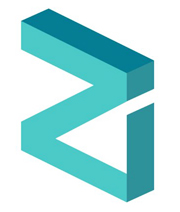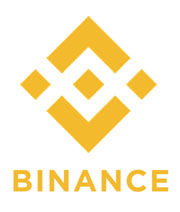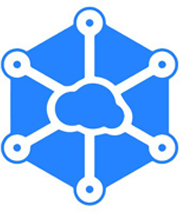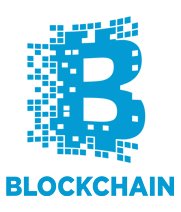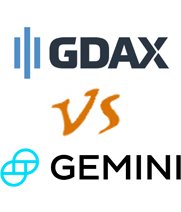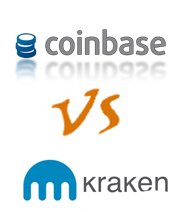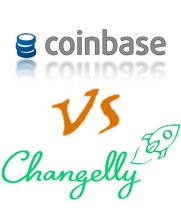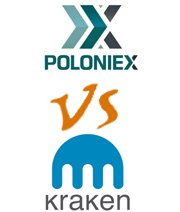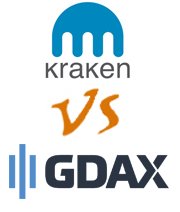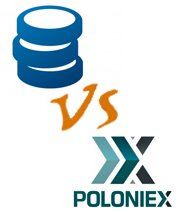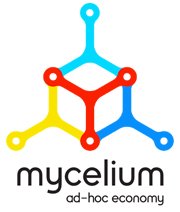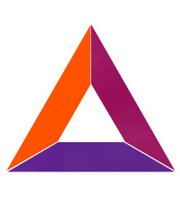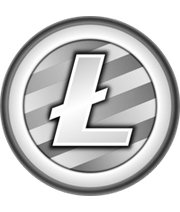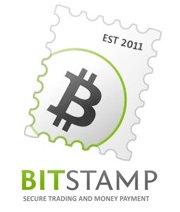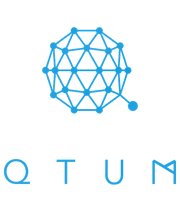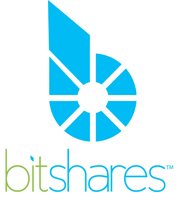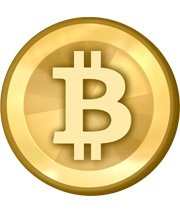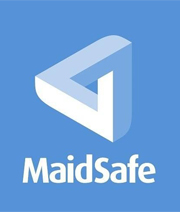
Table of Contents
- 1) Decentralization
- 2) What Does The SAFE Network Do?
- 3) Encrypting Data
- 4) Farmers, Vaults
- 5) How To Get Safecoins
- 6) How To Be An Elder Vault
- 7) A “Close Group” Consensus
- 8) SAFE and Security
- 9) The Problem of Double Spending
- 10) The History of MaidSafeCoin
- 11) The Team
- 12) The Supply of the Coin
- 13) Its Trading History
- 14) Where to Buy MaidSafeCoin
- 15) Where to Store MaidSafeCoin
- 16) MaidSafeCoin vs Siacoin
- 17) MaidSafeCoin vs Safecoin
- 18) MaidSafeCoin vs Substratum
- 19) Frequently Asked Questions
- 20) Conclusion
Decentralization is coming to data storage, and one of the newest platforms to get in the game is MaidSafe. This platform forms a network out of its users’ spare hard drive space, as well as processing power and connectivity. Their network (the SAFE Network) will use a currency called Safecoin, although the current token on the market is called MaidSafeCoin. This coin is only temporary, something which will eventually be able to be redeemed for Safecoins.
Centralized storage can be a problem, as businesses can sell your private information to advertisers. Worse, when these central institutions get hacked, your data could be compromised. Decentralized networks can prevent that from happening, as well as offer a host of other benefits.
We’ll be taking a look at MaidSafe, and with this article as your guide, you’ll learn what it is, how it works, and how you benefit from it. And while you’re here, you might want to check out our list of 2024’s best altcoins.
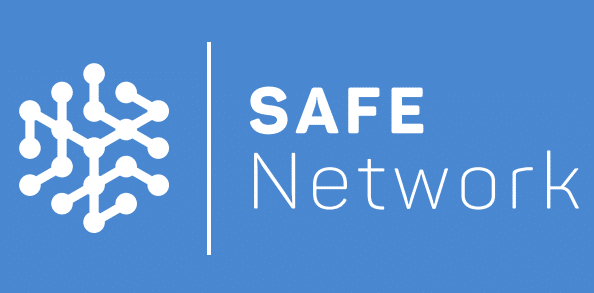
Decentralization
MaidSafe’s platform is inspired by other decentralized networks like Napster and Bitcoin, and the service plans to provide a number of winning features.
Not only do they aim to give people data storage and sharing that is completely encrypted, but anonymity, data that doesn’t need servers for storage or transfer, and the use of cryptocurrency within the service.
Right now there are a number of companies out there that offer data storage and sharing, and many of them offer it decentralizedas well. MaidSafe’s SAFE Network is supposed to be serious challenger, and it has to do with how the service is set up.
What Does The SAFE Network Do?
The focuses with the SAFE Network are security, autonomity, and P2P transactions. These are supposed to be the better alternatives to the current system, which is based on centralized servers which process data and host assets.
There are two types of user with the SAFE Network: farmers and clients. Farmers store the data, and are given a reward when the data is then accessed. Clients, on the other hand, utilize the services of the platform, including transferring currency and storing assets and data.
The network itself is a layer that lies just above the existing internet, which is encrypted and which replaces three of the current Open Systems Interconnection (OSI) layers, as seen in the image below.
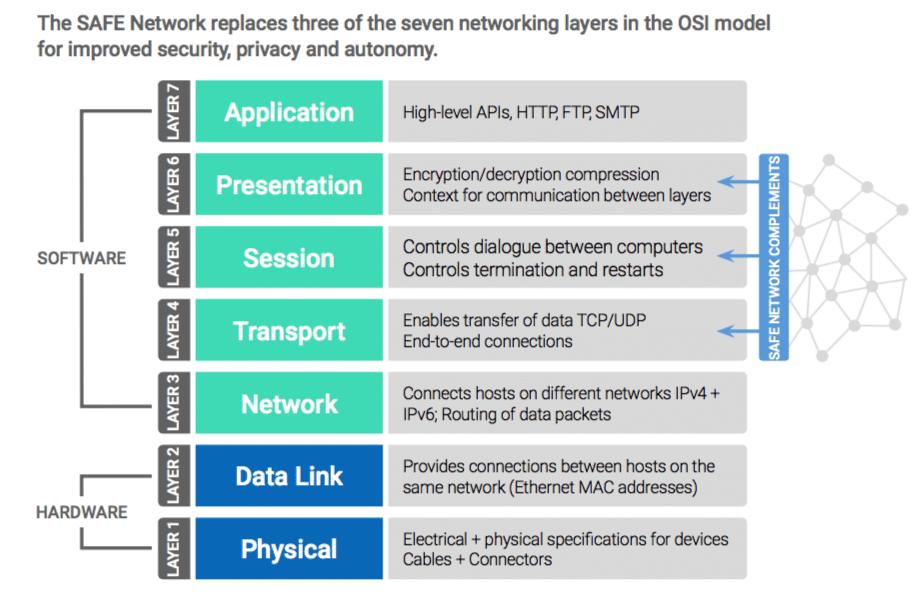
Encrypting Data
In the SAFE Network, any uploaded data – which can including anything from photos to documents to a program executable – is divided up into smaller parts and encrypted, before being distributed randomly over the network to different farmers’ hard drives. This means your things are safe and private, since even if someone managed to break the encyption, they still wouldn’t have access to the entire file, and can’t open it.
Copies of data are created so that people can access their files even when certain farmer’s turn their computers off or disconnect them.
Even better, when lots of people want access to a piece of data, more copies are made so that it’s actually easier and faster to get access to it, much in the same way that torrent sites have “seeds” that allow quicker downloads of files that are hosted by more people. Other coins that offer privacy measures like this can be found at our list of the best altcoins of 2024.
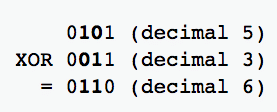
Farmers, Vaults
Now that we know what happens to data, we’ll learn where it goes. The answer, in a word, is vaults. Vault software lets users connect to the SAFE Network and saves the data on computer, while the people who run the vault software are the “farmers” that we mentioned earlier.
Anyone can apply to become a farmer. All you have to do is apply to join, after which you’ll be sent something called a proof of resource request, which determines if you have the network connectivity and processing power to be a good candidate. When you’re accepted, your “vault” will be filled with bits of disassembled data, and you’re officially considered a farmer!
How To Get Safecoins
If a user wants to access data on the network, the farmers face off in an effort to reconstitute the complete file and give it to the requester. The first farmer to do this “wins,” and can potentially get Safecoin in return for their work. Why “potentially”? Well, you’re not technically given Safecoin – instead, you receive the “name” of a Safecoin, but there’s a chance that it can already belong to another user. If it doesn’t, you get to claim it.
Safecoins are used for uploading data and using apps on the network, making them the official “currency.” Alas, you can’t just store all this data for free, so Safecoin is the way you pay up. You can exchange Safecoins for no fee.
The company hopes that the coins will give users the incentive to provide their disc space and CPU power to the network, and promote ever-increasing numbers of people joining to volunteer their resources to the system, thereby making the network larger, faster, and more capable – organically.
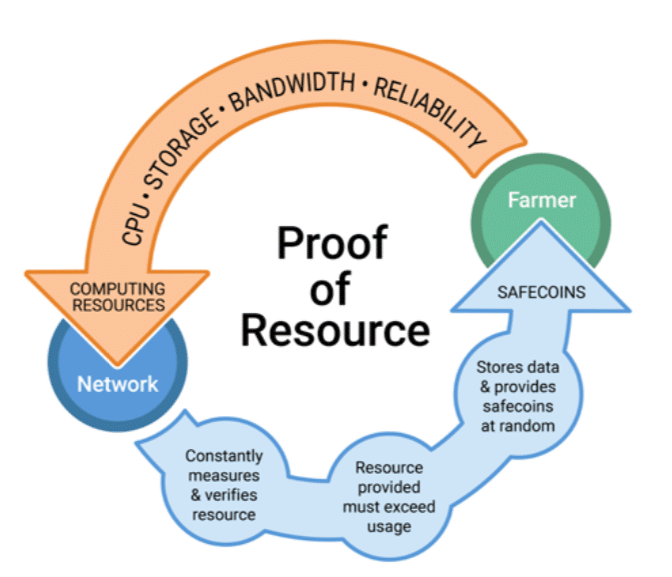
How To Be An Elder Vault
There are different “levels” of vaults. You start out at level one, and the longer you provide as a farmer, the higher your level goes. At a certain level, the network begins to trust you with more power, such as the ability to make decisions about how data gets managed.
Eventually you’ll become an Elder Vault, which gives you the ability to vote on how the different storage groups deal with data.
This system prevents people from getting too much influence early on without earning trust. By assigning seniority to those who’ve been around a long time, as opposed to those with the most resources, it keeps things safe and fair.
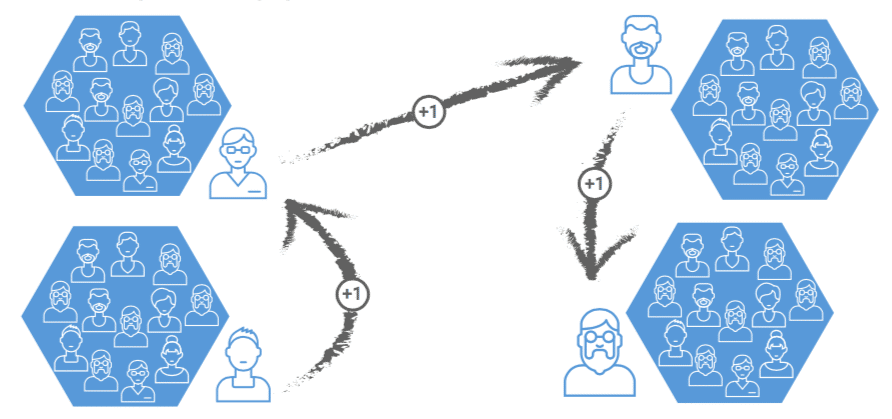
A “Close Group” Consensus
The addresses from the hashing function (which decides the addresses of the constituent “pieces” of data that get broken up) get managed by different vault groups. Elder vaults get to form the “consensus” on how to handle Safecoin transactions, or managing groups.
To prevent people from being unable to access data due to a power outage that takes out a whole vault, copies of data are shared with nearby vaults, just in case. Vaults closer to each other share more data, while those further away have less, thereby keeping things decentralized and preventing one vault from having too much influence over the whole network.
SAFE and Security
Say someone wanted to hack the network after gaining some influence as a vault. Not only would they have to deal with the random placement of their vault, they’d have to beocme an elder, which takes time. Then, even if they did that, they’d need other hackers onboard who were also Elders. Again, even if they could do that, it would be extremely hard to do. Why? Again, the random assignment of vaults to data means that any data they want access to might not be available, even in pieces.
The Problem of Double Spending
The SAFE Network isn’t a blockchain, so it records how many Safecoins people have by having each coin be its own file. This file has info on its current owner, but no history. So how do you make sure coins can’t be spent twice? The vault needs to reach a consensus on to whom the Safecoin should be transferred.
This way prevents coins from being spent twice, since a consensus can only be reached once per transaction, after which the coin goes to a new owner.
Other coins that have found a way to solve the problem of double spending can be found here at our list of the best altcoins of the year.
The History of MaidSafeCoin
MaidSafe was founded in Scotland in 2006. This would make it one of the oldest crypto platforms we’ve ever seen. There was a presale of the coin in April of 2024, where only 10% were sold. Afterwards, they sold $8 million of the coin, the maximum they’d set, in 5 hours.
The program isn’t fully up, yet. When it is, however, you’ll be able to exchange your MaidSafeCoins for Safecoins, and begin using the service.
The MaidSafeCoin Team
The team is led by David Irvine, a software engineer. The rest of the company is made up of a diverse group of people, including developers, designers, and software hobbyists. Although based in Scotland, they have people from all over the world, including China, India, Australia, South America, and the Middle East. The result is an international team that brings a lot of different skills to the table.
The Supply of MaidSafeCoin
There are 4.4 billion possible Safecoins, which (as stated before) can be gotten in return for redeeming MaidSafeCoins. Supply and demand will determine how often Safecoins are given to farmers. Too much storage? Fewer coins. Too little? More coins. This will keep things competitive and make sure that the network isn’t being overloaded. It also dis-incentivizes huge farms from opening up for maximum profits, as too much additional storage space will lead to fewer rewards.
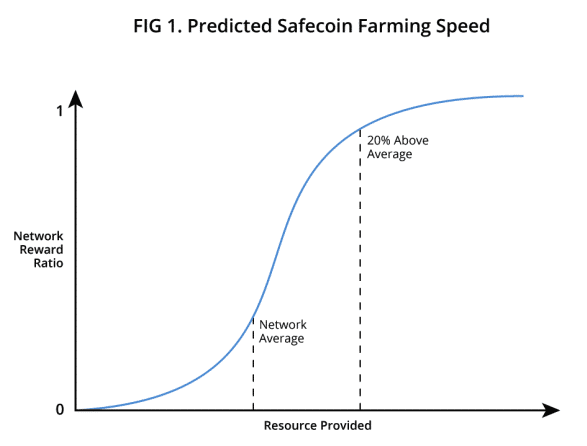
The Trading History
As you can see, the price started out pretty high, around $1.00, but has fallen to around $0.40. This isn’t entirely on MaidSafe, however, since the entire crypto industry went down in early January 2024. There are always ways to up the value, however, and one of those things could just be the release of the full service. More Safecoins being used means more MaidSafeCoins will be traded, if the service goes over well.
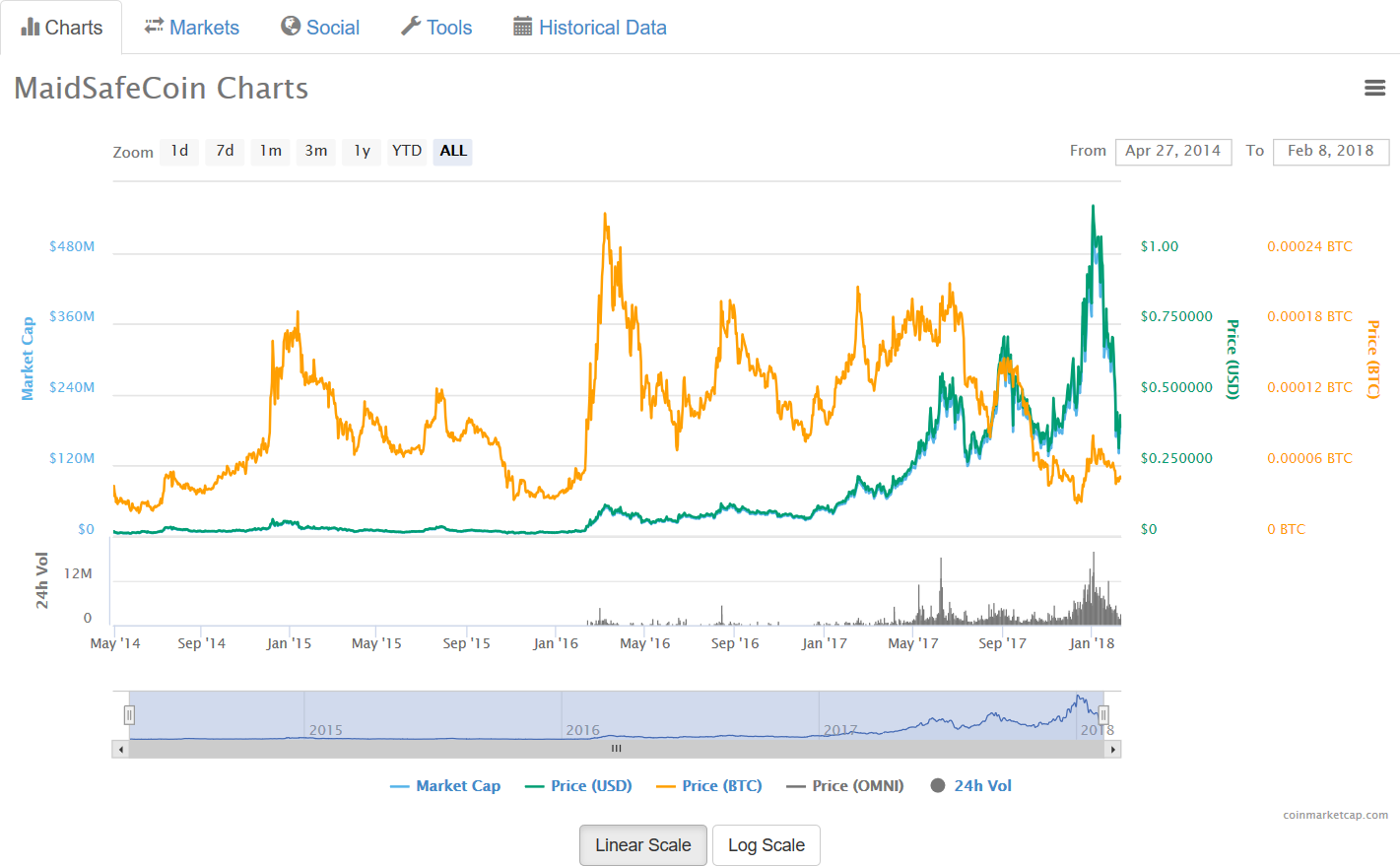
Where to Buy MaidSafeCoin
The good news is that MaidSafeCoin is easily buyable. You can get it on major exchanges like HitBTC, Bittrex, and Poloniex. These are where the most volume is being traded, so you’ll have the best luck there. Smaller exchanges may not have it, yet. For this reason, we suggest going with these three larger ones.
Where to Store MaidSafeCoin
There’s no official wallet for MaidSafeCoin, yet. This is in contrast to most new services. Of course, this doesn’t mean you should just leave your purchased coins on the exchange you get them from. You should keep them in a wallet like OmniWallet, but this is an online software version and thus vulnerable to hacking. If you prefer an offline version, try the blockchain-based Omnicore.
MaidSafeCoin vs Siacoin
These coins are both used in services that offer decentralized storage. MaidSafeCoin is only useful when exchanged for Safecoin, which is used to power transactions on the SAFE Network, while Siacoin is the main token currency itself. The Sia system uses blockchain tech for the coins, while MaidSafeCoins are individual files. This means Siacoins have the history of their owners built into them. MaidSafeCoins don’t.
MaidSafeCoin vs Safecoin
These are both currencies associated with the SAFE Network, but they’re not exactly the same things. MaidSafeCoins are tokens that can be exchanged on the open market, but they can’t be used within the SAFE Network. Once it’s up, Safecoin is the only currency that’s usable. MaidSafeCoins can be redeemed for Safecoins, however, although that will have to wait until the SAFE Network has been made operational.
MaidSafeCoin vs Substratum
These services are fairly similar, but the tokens are different. Both parent services aim to allow users to rent out space for storage, and use tokens for payment and reimbursement. MaidSafeCoin doesn’t seem to work in the SAFE Network, however, while the Substratum token does. MaidSafeCoin is, in a way, a temporary token that allows one to buy Safecoins, the ones that run on the SAFE Network, while Substratum can be traded and works directly in the platform.
Frequently Asked Questions
- Is there an MaidSafeCoin wallet?
No. - Where can I read MaidSafeCoin news?
You can read news on crypto blogs, technology sites and Reddit. - Is MaidSafeCoin on Reddit?
Yes, they’ve got a presence there. - How do I buy MaidSafeCoin?
You can buy it on Bittrex, Poloniex, and HitBTC. - What’s the prediction for the price of MaidSafeCoin?
It could go up once the SAFE Network goes live. - How does MaidSafeCoin mining work?
There is no mining for MaidSafeCoins, although Safecoins can be mined by farmers. - Is there a MaidSafeCoin wallet for Android?
- Can I store MaidSafeCoin on the Ledger Nano S?
No, because it’s not an ERC-20 token. - Is there going to be an MaidSafeCoin wallet for desktop?
We don’t know, but there isn’t one currently. - Can I store MaidSafeCoin in Omniwallet?
Yes. - What’s the MaidSafe release date?
Late 2024, by our reckoning. - Is MaidSafeCoin a good investment?
It could be, if the service takes off. - What is MaidSafeCoin?
It’s a token that can be redeemed for Safecoin. - Do you know the price of MaidSafeCoin?
Last we knew, it was hovering around $0.40. - Can I buy MaidSafeCoin with credit card?
Depends on who you buy from.
Conclusion
MaidSafeCoin is a little unusual, since it’s not the actual currency the SAFE Network uses – nonetheless depending on how valuable Safecoins become, MaidSafeCoin could grow in price with their value. When SAFE (possibly) launches later in 2024, it’ll be interesting to see how it competes with other services like Sia. MaidSafe has been around since 2006, making it one of the oldest services we’ve reviewed here – older even than blockchain technology, which was developed in 2024. Will all this time pay off? We’ll have to stay tuned.
Like our review? Want to see more? Just follow this link to check out our choices for the best altcoins of 2024.



